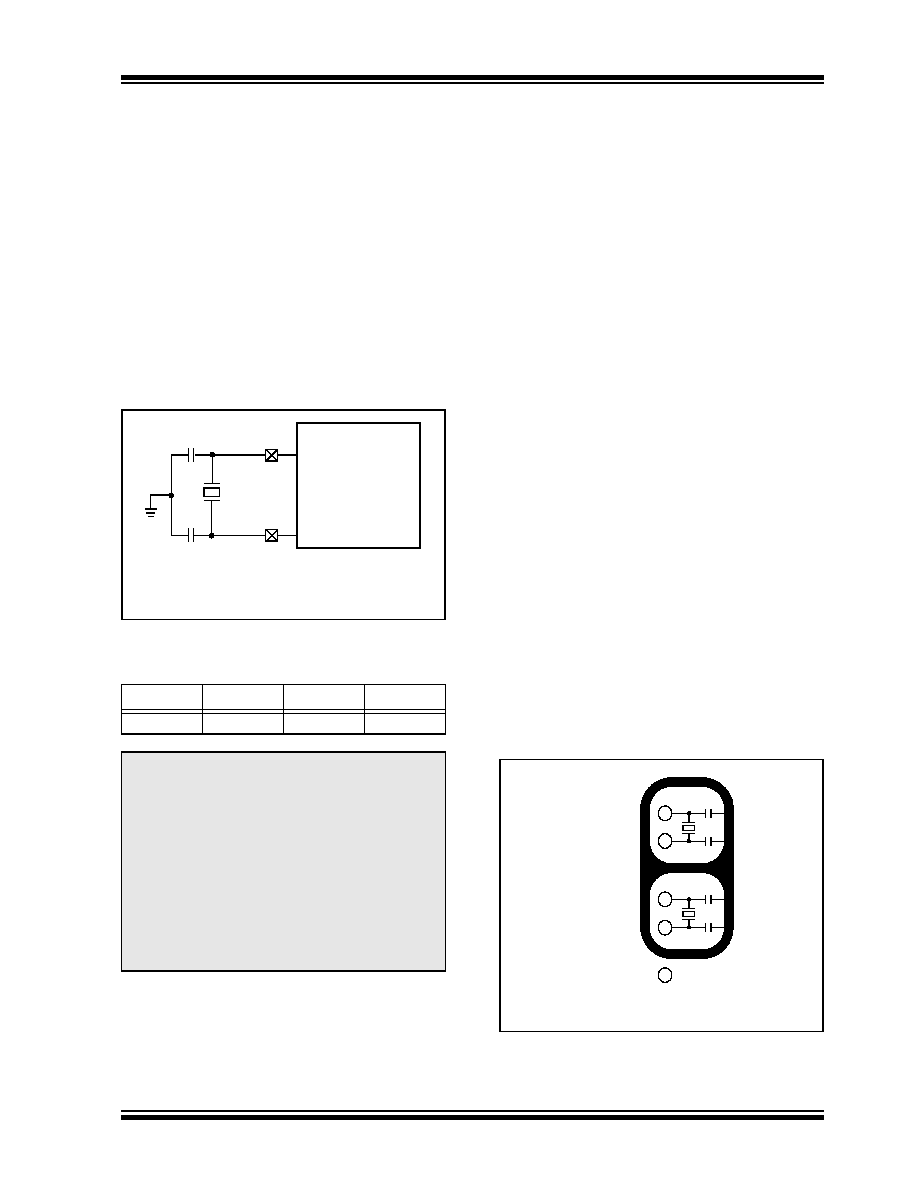- 您現(xiàn)在的位置:買賣IC網(wǎng) > PDF目錄16957 > AC162078 (Microchip Technology)HEADER INTRFC MPLAB ICD2 18F1330 PDF資料下載
參數(shù)資料
| 型號: | AC162078 |
| 廠商: | Microchip Technology |
| 文件頁數(shù): | 17/318頁 |
| 文件大小: | 0K |
| 描述: | HEADER INTRFC MPLAB ICD2 18F1330 |
| 標準包裝: | 1 |
| 附件類型: | 轉(zhuǎn)換接頭 |
| 適用于相關(guān)產(chǎn)品: | ICD2 |
| 產(chǎn)品目錄頁面: | 658 (CN2011-ZH PDF) |
第1頁第2頁第3頁第4頁第5頁第6頁第7頁第8頁第9頁第10頁第11頁第12頁第13頁第14頁第15頁第16頁當前第17頁第18頁第19頁第20頁第21頁第22頁第23頁第24頁第25頁第26頁第27頁第28頁第29頁第30頁第31頁第32頁第33頁第34頁第35頁第36頁第37頁第38頁第39頁第40頁第41頁第42頁第43頁第44頁第45頁第46頁第47頁第48頁第49頁第50頁第51頁第52頁第53頁第54頁第55頁第56頁第57頁第58頁第59頁第60頁第61頁第62頁第63頁第64頁第65頁第66頁第67頁第68頁第69頁第70頁第71頁第72頁第73頁第74頁第75頁第76頁第77頁第78頁第79頁第80頁第81頁第82頁第83頁第84頁第85頁第86頁第87頁第88頁第89頁第90頁第91頁第92頁第93頁第94頁第95頁第96頁第97頁第98頁第99頁第100頁第101頁第102頁第103頁第104頁第105頁第106頁第107頁第108頁第109頁第110頁第111頁第112頁第113頁第114頁第115頁第116頁第117頁第118頁第119頁第120頁第121頁第122頁第123頁第124頁第125頁第126頁第127頁第128頁第129頁第130頁第131頁第132頁第133頁第134頁第135頁第136頁第137頁第138頁第139頁第140頁第141頁第142頁第143頁第144頁第145頁第146頁第147頁第148頁第149頁第150頁第151頁第152頁第153頁第154頁第155頁第156頁第157頁第158頁第159頁第160頁第161頁第162頁第163頁第164頁第165頁第166頁第167頁第168頁第169頁第170頁第171頁第172頁第173頁第174頁第175頁第176頁第177頁第178頁第179頁第180頁第181頁第182頁第183頁第184頁第185頁第186頁第187頁第188頁第189頁第190頁第191頁第192頁第193頁第194頁第195頁第196頁第197頁第198頁第199頁第200頁第201頁第202頁第203頁第204頁第205頁第206頁第207頁第208頁第209頁第210頁第211頁第212頁第213頁第214頁第215頁第216頁第217頁第218頁第219頁第220頁第221頁第222頁第223頁第224頁第225頁第226頁第227頁第228頁第229頁第230頁第231頁第232頁第233頁第234頁第235頁第236頁第237頁第238頁第239頁第240頁第241頁第242頁第243頁第244頁第245頁第246頁第247頁第248頁第249頁第250頁第251頁第252頁第253頁第254頁第255頁第256頁第257頁第258頁第259頁第260頁第261頁第262頁第263頁第264頁第265頁第266頁第267頁第268頁第269頁第270頁第271頁第272頁第273頁第274頁第275頁第276頁第277頁第278頁第279頁第280頁第281頁第282頁第283頁第284頁第285頁第286頁第287頁第288頁第289頁第290頁第291頁第292頁第293頁第294頁第295頁第296頁第297頁第298頁第299頁第300頁第301頁第302頁第303頁第304頁第305頁第306頁第307頁第308頁第309頁第310頁第311頁第312頁第313頁第314頁第315頁第316頁第317頁第318頁

PIC18F1230/1330
2009 Microchip Technology Inc.
DS39758D-page 113
13.2
Timer1 Oscillator
A crystal oscillator circuit is built-in between pins T1OSI
(input) and T1OSO/TICKI (amplifier output). The place-
ment of these pins depends on the value of Configuration
bit, T1OSCMX (see Section 20.1 “Configuration
). It is enabled by setting control bit T1OSCEN
(T1CON<3>). The oscillator is a low-power oscillator
rated for 32 kHz crystals. It will continue to run during all
power-managed modes. The circuit for a typical LP
oscillator is shown in Figure 13-3. Table 13-1 shows the
capacitor selection for the Timer1 oscillator.
The user must provide a software time delay to ensure
proper start-up of the Timer1 oscillator.
FIGURE 13-3:
EXTERNAL
COMPONENTS FOR THE
TIMER1 LP OSCILLATOR
TABLE 13-1:
CAPACITOR SELECTION FOR
THE TIMER OSCILLATOR
13.2.1
USING TIMER1 AS A CLOCK
SOURCE
The Timer1 oscillator is also available as a clock source
in power-managed modes. By setting the System
Clock Select bits, SCS1:SCS0 (OSCCON<1:0>), to
‘01’, the device switches to SEC_RUN mode; both the
CPU and peripherals are clocked from the Timer1 oscil-
lator. If the IDLEN bit (OSCCON<7>) is cleared and a
SLEEP
instruction is executed, the device enters
SEC_IDLE mode. Additional details are available in
Whenever the Timer1 oscillator is providing the clock
source, the Timer1 system clock status flag, T1RUN
(T1CON<6>), is set. This can be used to determine the
controller’s current clocking mode. It can also indicate
the clock source being currently used by the Fail-Safe
Clock Monitor. If the Clock Monitor is enabled and the
Timer1 oscillator fails while providing the clock, polling
the T1RUN bit will indicate whether the clock is being
provided by the Timer1 oscillator or another source.
13.3
Timer1 Oscillator Layout
Considerations
The oscillator circuit, shown in Figure 13-3, should be
located as close as possible to the microcontroller.
There should be no circuits passing within the oscillator
circuit boundaries other than VSS or VDD.
If a high-speed circuit must be located near the
oscillator (such as the PWM pin, or the primary
oscillator using the OSC2 pin), a grounded guard ring
around the oscillator circuit, as shown in Figure 13-4,
may be helpful when used on a single-sided PCB, or in
addition to a ground plane.
FIGURE 13-4:
OSCILLATOR CIRCUIT
WITH GROUNDED GUARD
RING
Osc Type
Freq
C1
C2
LP
32 kHz
27 pF(1)
Note 1:
Microchip suggests this value as a starting
point in validating the oscillator circuit.
2:
Higher capacitance increases the stability
of the oscillator, but also increases the
start-up time.
3:
Since each resonator/crystal has its own
characteristics, the user should consult
the resonator/crystal manufacturer for
appropriate
values
of
external
components.
4:
Capacitor values are for design guidance
only.
Note:
See the notes with Table 13-1 for addi-
tional information about capacitor selec-
C1
C2
XTAL
PIC18FXXXX
T1OSI
T1OSO/T1CKI
32.768 kHz
33 pF
RB3
RB2
OSC1
OSC2
VDD
Note:
Not drawn to scale.
相關(guān)PDF資料 |
PDF描述 |
|---|---|
| MLF1005LR33K | INDUCTOR MULTILAYER .33UH 0402 |
| RBM18DRTF | CONN EDGECARD 36POS DIP .156 SLD |
| CBC2518T220M | INDUCTOR 22UH 20% 1007 SMD |
| RCM25DRPS | CONN EDGECARD 50POS DIP .156 SLD |
| LGU2W331MELB | CAP ALUM 330UF 450V 20% SNAP |
相關(guān)代理商/技術(shù)參數(shù) |
參數(shù)描述 |
|---|---|
| AC162079 | 功能描述:插座和適配器 MPLAB ICD 2 64/80L HEADER PIC18F85J90 RoHS:否 制造商:Silicon Labs 產(chǎn)品:Adapter 用于:EM35x |
| AC162083 | 功能描述:插座和適配器 MPLAB ICD 2 8L/14L HEADER PIC16F616 RoHS:否 制造商:Silicon Labs 產(chǎn)品:Adapter 用于:EM35x |
| AC162087 | 功能描述:插座和適配器 MPLAB ICD 2 68/84 HEADER (PIC18F87J50) RoHS:否 制造商:Silicon Labs 產(chǎn)品:Adapter 用于:EM35x |
| AC162088 | 功能描述:插座和適配器 MPLAB ICD 2 PIC24FJ64GA004 28P RoHS:否 制造商:Silicon Labs 產(chǎn)品:Adapter 用于:EM35x |
| AC162088 | 制造商:Microchip Technology Inc 功能描述:MPLAB ICD 2 PIC24FJ64GA004 28P Header |
發(fā)布緊急采購,3分鐘左右您將得到回復。